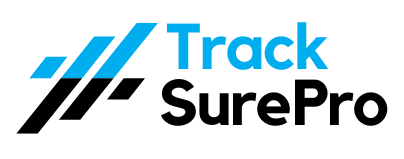Efficient Subcontractor Management: Best Practices for Onboarding and Compliance

Efficient Subcontractor Management: Best Practices for Onboarding and Compliance
Introduction:
Efficiently managing subcontractors is a critical aspect of successful construction projects. From onboarding to compliance with safety regulations and insurance requirements, subcontractor management can pose significant challenges. This comprehensive guide explores the best practices for subcontractor onboarding and compliance management, focusing on how construction firms can streamline these processes to enhance efficiency and ensure project success. Additionally, it highlights the role of TrackSurePro, a leading software solution, in simplifying subcontractor management and compliance.
Understanding Subcontractor Management:
- Scope and Importance:
- Subcontractors play a vital role in construction projects, handling specific tasks such as plumbing, electrical work, and carpentry.
- Challenges in Subcontractor Management:
- Challenges include timely onboarding, verifying qualifications and certifications, ensuring compliance with safety standards, and managing multiple subcontractors on a single project.
Best Practices for Subcontractor Onboarding:
- Prequalification Process:
- Implement a prequalification process to assess subcontractors’ financial stability, experience, safety records, and insurance coverage.
- Clear Contractual Agreements:
- Establish clear and detailed contractual agreements that outline project scope, timelines, deliverables, and compliance requirements.
- Comprehensive Orientation:
- Conduct thorough orientations for new subcontractors, covering project-specific safety protocols, communication channels, and expectations.
- Document Collection and Review:
- Collect and review essential documents such as certificates of insurance (COIs), licenses, permits, and safety training certifications.
- Streamlined Communication:
- Maintain open lines of communication with subcontractors, providing clear channels for reporting issues, requesting information, and addressing concerns.
Ensuring Compliance with Safety Regulations:
- OSHA Compliance:
- Ensure subcontractors adhere to OSHA safety standards, including fall protection, hazard communication, and scaffolding requirements.
- Worker’s Compensation (Worker’s Comp):
- Verify that subcontractors have adequate Worker’s Comp coverage for their employees.
- General Liability Insurance:
- Require subcontractors to provide proof of general liability insurance to protect against property damage and bodily injury claims.
- Regular Safety Audits:
- Conduct regular safety audits and inspections to verify compliance with safety regulations and identify potential hazards.
The Role of TrackSurePro in Subcontractor Management:
- Automated Document Collection:
- TrackSurePro automates the collection of subcontractor documents, such as COIs and licenses, ensuring all necessary paperwork is up-to-date and accessible.
- Compliance Tracking:
- The software tracks subcontractor compliance with safety regulations, insurance requirements, and contractual obligations, providing real-time status updates.
- Alerts and Notifications:
- Users receive alerts and notifications for upcoming document expirations, safety training renewals, and compliance deadlines.
- Centralized Communication:
- TrackSurePro offers a centralized platform for communication between contractors and subcontractors, facilitating streamlined collaboration and information sharing.
- Reporting and Analytics:
- Generate comprehensive reports on subcontractor compliance status, safety performance, and document history for audits and evaluations.
Conclusion:
Efficient subcontractor management is crucial for construction projects’ success, requiring careful attention to onboarding processes and compliance with safety regulations and insurance requirements. This guide has outlined best practices for subcontractor onboarding, emphasizing the importance of prequalification, clear communication, and thorough documentation. Additionally, it has highlighted the role of TrackSurePro as a solution to streamline subcontractor management, automate document collection, track compliance, and improve communication. By adopting these best practices and leveraging TrackSurePro’s features, construction firms can enhance efficiency, mitigate risks, and ensure smooth collaboration with subcontractors. With a focus on effective subcontractor management, construction projects can achieve greater success, safety, and compliance adherence.

